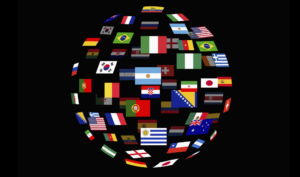
What Leaders Get Wrong About Personality Tests
In the fast-paced realm of modern work, where remote and hybrid setups reign supreme, the intricacies of collaboration have taken on a whole new meaning.

In the fast-paced realm of modern work, where remote and hybrid setups reign supreme, the intricacies of collaboration have taken on a whole new meaning.

Toxic cultures are like dark clouds looming over the world of work. Wherever they go, they wreak havoc with employee wellbeing. That’s not an overstatement.

Anyone who says being a leader is easy is simply not being honest. Leadership is hard. Yes, I said it. And that shouldn’t shock anyone.

Imagine this: You’re attending one of your company’s senior staff meetings. The CEO nods and smiles when one executive shares a KPI chart with an

Human resources can be a highly rewarding profession, especially at technology startup companies. In fact, recent research says effective human resources management actually helps drive

Are you disturbed by news about organizations backtracking on workplace diversity and inclusion commitments? I certainly am. For example, a recent Wall Street Journal article

If pay transparency isn’t yet a hot topic in your organization, it soon will be. Recently, several states have passed pay transparency laws, and others

No question about it. Strong internal communication is critical to a strong business. But it’s not easy — especially when workplace dynamics are constantly fluctuating.

Is your organization striving to create a more inclusive work culture? If so, you’re not alone. Many HR and business leaders are committed to improving

When the pandemic arrived in 2020, everyone’s definition of work changed in a heartbeat. Most people headed home, leaving their offices, cubicles, water coolers, and

In today’s diverse, dynamic work world, employers increasingly recognize the transformative power of diversity, equity, and inclusion. Still, concerns often arise about the cost of

We all share a deep desire for belonging. From Abraham Maslow to Brené Brown, experts agree that this “indescribable feeling of being welcomed” is a

In recent years, diversity, equity, and inclusion (DEI) has become a red-hot topic among employers and human resources professionals who plan and manage these initiatives.

Diversity, Equity, and Inclusion (DEI) is by definition a people-centered business endeavor. So at first glance, the phrase “people-first DEI” may seem redundant. But that’s

A strong internal communications function is essential for every company, both culturally and operationally. It helps keep employees aware of relevant news and updates, excited

Why Focus on Psychological Safety? Successful organizations create conditions that help team members perform effectively, solve complex problems in innovative ways, and feel a sense

Sponsored by Social Flowers What a difference three years can make! I’m sure that’s what many remote employees are thinking these days. Before the pandemic,

Sponsored by ADP The WOTC (Work Opportunity Tax Credit) offers businesses a tremendous opportunity for tax credits based on hiring. But for organizations to participate

In the past, many employers dismissed the idea of building an international workforce. Those who could attract local talent considered it unnecessary. Others didn’t have

In recent years, I’ve been encouraged by a groundswell of employers that are choosing to embrace “culture-add” people practices. In fact, several months ago, I

One year after the onset of the global pandemic, there is light at the end of the tunnel. Economies are opening back up, the vaccine

COVID-19 inevitably uprooted the way our society works. Due to the pandemic, organizations have uncovered cracks in their foundations that shed light on long-standing social

A recent study revealed that roughly 40% of U.S. companies offer paid parental leave for both parents. Many publications, including the survey itself, highlighted this

Businesses don’t tend to thrive in an echo chamber. In fact, precedent shows you need the contribution of multiple perspectives to inform processes, build a

How do you defeat unconscious bias? First, you need to know what it is. Unconscious bias (also known as implicit bias) refers to unconscious forms